Glossary
These explanations are drawn from the SSA regulations, the Social Security Handbook, the SSA’s Program Operations Manual System (POMS), the Medical Expert Handbook, the Vocational Expert Handbook, and SSA’s website.
Acquiescence Rulings (AR).
A type of Social Security ruling in which SSA agrees to follow a circuit court of appeals decision that is contrary to SSA policy. The ruling will be followed only in the circuit from which the decision was issued.
Activities of Daily Living (ADL).
Include adaptive activities such as cleaning, shopping, cooking, taking public transportation, paying bills, maintaining a residence, caring appropriately for grooming and hygiene, using telephones and directories, and using a post office. ADLs are evaluated not only for the mental Listings but also when assessing credibility and pain.
Administrative Appeals Judge (AAJ).
Appeals Council judge.
Administrative Law Judge (ALJ).
A neutral fact finder employed by the Office of Disability Adjudication & Review (ODAR) to determine if a claimant is entitled to benefits under the law. Most decisions are related to disability programs but ALJs decide other issues such as retirement, as well.
Age.
Age refers to an individual’s chronological age and the extent to which age affects ability to adapt to a new work situation and to work in competition with others. The age categories are:
1. Younger Person
—if an individual is under age 50, the regulations provide that generally SSA does not consider that the individual’s age will seriously affect the ability to adapt to new work situations. It is only when an individual is illiterate and age 45 through 49 that age affects the ability to adapt to new work situations for those under age 50.
2. Person Approaching Advanced Age
—if an individual is closely approaching advanced age (50-54), SSA will consider age along with a severe impairment and limited work experience as possibly seriously affecting an individual’s ability to adapt to a significant number of jobs in the national economy.
3. Person of Advanced Age
—SSA considers advanced age (55-59) to be the point at which age significantly affects a person’s ability to engage in substantial gainful activity. If an individual is severely impaired, of advanced age, and cannot do at least medium work, he/she may be found disabled unless the individual has skills that can be used in (transferred to) less demanding jobs that exist in significant numbers in the national economy.
4. Person Close to Retirement Age
—if an individual is close to retirement age (60-64) and has a severe impairment, he or she will be considered not able to adjust to sedentary or light work unless the individual has skills that are highly marketable.
Alcoholism or Other Drug Abuse (AODA).
Also referred to as drug addiction or alcoholism (DAA).
Alleged Onset Date (AOD).
The date on which a claimant indicated he or she became disabled due to a physical or mental impairment.
Americans with Disabilities Act (ADA).
Federal law that provides remedies for discrimination against disabled people.
Appeals Council (AC).
The highest level of administrative appeal. The Appeals Council reviews decisions made by ALJs. Appeals Counsel members decide if a request for review of an ALJ decision will be granted, denied, or dismissed. It is located in Falls Church, Virginia.
Auxiliary (AUX).
Other family members, usually children or spouse, to whom additional monthly benefits may be payable on the earnings record of a person entitled to Social Security benefits.
Average Current Earnings (ACE).
Multiple formulas are used to calculate average current earnings, then the highest number is used. A reduction in the disabled worker’s, and dependents’ benefits may be made for any month the worker’s total Social Security benefits, workers compensation, and where applicable, other public disability benefits exceed 80% of his or her “average current earnings.” The SSA earnings record shows the ACE amount with the 80% adjustment already computed.
Average Indexed Monthly Earnings (AIME).
The dollar amount used to calculate Social Security benefits for people who attained age 62 or became disabled (or died) after 1978. To arrive at AIME, SSA adjusts actual past earnings using an “average wage index,” so claimants won’t lose the value of past earnings (when money was worth more) in relation to more recent earnings. If a claimant attained age 62 or became disabled (or died) before 1978, SSA uses Average Monthly Earnings (AME).
Broad World of Work.
Work that exists at all exertional levels. It may include skilled and semiskilled work as well as unskilled work.
Central Office (CO).
Administrative headquarters for the Social Security Administration, located in Woodlawn, Maryland, a suburb of Baltimore.
Chief Administrative Law Judge (CALJ).
Located in Falls Church, Virginia, the CALJ has supervisory authority over Regional Chief Administrative Law Judges, Hearing Office Chief ALJs, and ALJs.
Childhood Disability Benefits (CDB).
This program provides benefits for disabled adult children (DAC) who may obtain benefits on the work record of a retired, disabled, or deceased parent. These claimants must be over age 18 and unmarried, and must become disabled before age 22. Disability is determined using the rules for the regular Social Security disability program.
Claims Representatives (CR).
Federal employees of the Social Security Administration who assist individuals in applying for Social Security and SSI benefits. They determine if the claimant meets entitlement requirements of the law and regulations. They make many of the required inputs to a nationwide database that processes claims. They are supposed to represent both the claimant’s and the Government’s interests.
Code of Federal Regulations (CFR).
The Code of Federal Regulations is a codification of the general and permanent rules published in the Federal Register by the executive departments and agencies of the federal government. The Code is divided into 50 titles that represent broad areas subject to federal regulation. Each title is divided into chapters that usually bear the name of the issuing agency. Each chapter is further subdivided in parts covering specific regulatory areas.
Consultative Examination (CE).
Medical examination at government expense. Exams may be from the individual’s treating physician or independent consultative physician retained by SSA. Purpose is to obtain more detailed medical findings about the impairment; or obtain technical or specialized medical information; or to resolve conflicts or differences in findings already in the file.
Continuing Disability Review (CDR).
Periodic reviews conducted to determine if disability continues. They may be scheduled where medical improvement was expected or unscheduled if the beneficiary or state vocational rehabilitation agency reports improvement. Formerly called Continuing Disability Investigation (CDI).
Controlling Date (CD).
The latest date a widow(er) can be found disabled. It functions like the Date Last Insured in a regular Social Security disability case.
Cost of Living Adjustment (COLA).
Automatic periodic (usually yearly) increases in SSA and SSI benefits based on a formula tied to cost of living increases. The increase is based on the smaller of either the Consumer Price Index as published by the Department of Labor or the yearly average Wage Index, which is based on nationwide wages.
Date of Death (DOD).
The date shown on evidence of death record, death certificate, or statement from funeral director that an individual died. The established date of death is used to determine when benefits may be paid to survivors or when benefits should cease.
Date of Entitlement (DOE) to Disability (DOED).
Date of entitlement establishes the date from which past due benefits will be paid.
1. Title II—Five full months after date of onset.
2. Title XVI—Date of application or date disability is established for claims filed before August 22, 1996. For claims filed on or after that date, the SSI date of entitlement is the first of the month after all requirements are met.
Date of Filing (DOF).
The date that is used to determine when an application for benefits is received. This may be the actual date received or a date in the past in certain “protective filing date” cases.
Date First Insured (DFI).
The earliest date the claimant first meets the coverage requirements for Social Security disability.
Date Last Insured (DLI).
The date on which a claimant’s coverage for disability protection expires. It applies in Title II claims only.
Date Last Met (DLM).
Same as Date Last Insured (DLI).
Date of Onset (DOO).
The date the claimant became disabled.
Deceased Wage Earner (DWE).
A person who has worked under the social security system and has died. It is possible for surviving family member or estate to receive back benefits that were due an individual before he died. Also monthly survivor benefits may be due.
Detailed Earnings Query (DEQY).
An SSA printout that shows earnings from each employer.
Diary Date.
A scheduled reexamination date in an allowed case for evaluation of possible medical improvement.
Dictionary of Occupational Titles (DOT).
Last updated in 1991, the DOT provides a brief description of more than 12,000 occupations that exist in the economy. Prepared by the Department of Labor (DOL).
Disabled Adult Child Benefits (DAC).
See Childhood Disability Benefits (CDB).
Disability.
The inability to perform any substantial gainful activity by reason of any medically determinable physical and/or mental impairment which can be expected to result in death or which has lasted or can be expected to last for a continuous period of not less than 12 months.
Disability Determination Service (DDS).
State agency that makes disability determinations at initial and reconsideration levels. Usually called the “state agency.”
Disability Determination Service Query (DDSQ).
A query of an SSA database that shows information about actions taken on a claim by the state agency at the initial and reconsideration levels.
Disability Insurance (DI).
Social Security Disability Insurance program.
Disability Insurance Benefits (DIB).
Monthly Social Security disability payments.
Disabled Individual, Worker or Child (DIWC).
Disability claim under Title II of the Social Security Act.
Disabled Widow/Widower Benefits (DWB or DIWW).
The disability benefits available to disabled widows and widowers of insured workers, with benefits first payable to the widow(er) at age 50.
DISCO DIB Earnings Record.
An SSA earnings printout, the name of which stands for DIBInsured Status Computation Online. It shows yearly earnings, date first insured and date last insured but it does not show the PIA.
Drug Addiction or Alcoholism (DAA).
Also referred to as alcoholism or other drug abuse (AODA).
Earnings Record (ER).
A history of earnings reported to SSA. The earnings are used to determine insured status for entitlement to retirement, survivors, disability and health insurance benefits and to calculate cash benefit rates.
Earnings Requirement.
Applies only in Title II DIB cases. A DIB claimant must have worked and earned at least 20 quarters of coverage in the last 40 quarters before “onset” (equivalent to 5 of the last 10 years) and be “fully insured” to be entitled to disability benefits. SSA gives special consideration to blind claimants and claimants under the age of 31. In these situations, claimants with fewer than 20 quarters of covered work may be entitled to disability benefits. (See Insured Status.)
Education.
Education is primarily used to mean formal schooling or other training which contributes to ability to meet vocational requirements, for example, reasoning ability, communication skills, and arithmetical ability. However, if an individual does not have formal schooling, this does not necessarily mean that he or she is uneducated or lacks these abilities. The term “education” also includes how well the individual is able to communicate in English. Unless there is evidence to contradict a person’s statement as to the numerical grade level completed in school, the statement will be used to determine the person’s educational abilities. The person’s present level of reasoning, communication, and arithmetical ability may be higher or lower than the level of formal education. Evidence of this includes the kinds of responsibilities the person had when working, any acquired skills, daily activities, and hobbies, as well as the results of testing. Therefore, a person will meet the criteria for the different education levels specified in the regulations, not solely on the basis of his or her statements, but based upon all evidence pertinent to evaluating that person’s educational capacities.
Categories of Education:
1. Illiteracy
—Illiteracy means the inability to read or write. SSA considers someone illiterate if the person cannot read or write a simple message such as instructions or inventory lists, even though the person can sign his or her name. Generally, an illiterate person has had little or no formal schooling.
2. Marginal Education
—Marginal education means ability in reasoning, arithmetic, and language skills which are needed to do simple, unskilled types of jobs. SSA generally considers that formal schooling at a 6th grade level or less is a marginal education.
3. Limited Education
—Limited education means ability in reasoning, arithmetic, and language skills, but not enough to allow a person with these educational qualifications to do most of the more complex job duties needed in semi-skilled or skilled jobs. SSA generally considers that a 7th grade through the 11th grade level of formal education is a limited education.
4. High School Education and Above
—High school education and above means abilities in reasoning, arithmetic, and language skills acquired in formal schooling at a 12th grade level or above. SSA generally considers that someone with these educational abilities can do semi-skilled through skilled work. High school education includes a General Equivalency Diploma (GED).
The criterion of “high school or graduate or more—provides for direct entry into skilled work” is met when there is little time lapse between the completion of formal education and the date of adjudication, and where the content of the education would enable individuals, with a minimal degree of job orientation, to begin performing the skilled job duties of certain identifiable occupations with their RFC.
5. Inability to Communicate in English
—Since the ability to speak, read and understand English is generally learned or increased at school, SSA may consider this an educational factor. Because English is the dominant language of the country, it may be difficult for someone who doesn’t speak and understand English to do a job, regardless of the amount of education the person may have in another language. Therefore, SSA considers a person’s ability to communicate in English when it evaluates what work, if any, he or she can do. It generally doesn’t matter in what other language a person may be fluent.
Electronic Disability Folder (eDIB).
SSA’s online collection of documents related to a claimant’s case. It is designed to replace the paper files used by SSA in the past.
Electronic Disability Guide (eDG).
Part of the POMS that explains policy, process and procedural changes for electronic processing of disability claims.
Electronic Records Express (ERE).
Website where claimants’ representatives can upload documents to a claimant’s Social Security hearing exhibit file: http://eme.ssa.gov. Registration is required before using the website for the first time. Information needed to file documents is found on the barcode provided by SSA.
Electronic Worksheet (EWS).
Notes written by state agency doctors and disability examiners that summarize a claimant’s medical records and explain state agency doctors’ conclusions in a case.
Employee (EE).
Under the Social Security Act there are three classes of workers who are considered employees:
1. Officers of corporations.
2. Those who are employees under the common-law test.
3. Those in four specific occupations who if they are not employees under 1 or 2 above may still be employees if certain conditions are met. Agent drivers, full-time life insurance salespersons, full-time traveling or city salespersons and home workers may be considered employees.
Employer / Employee (ER / EE).
The employer/employee relationship is a term used to describe who is the employer and has the final authority to control the worker in performing his or her services, or which reserves the right to do so—the person or entity which has the sole power to hire, fire, and supervise the worker. There are a number of rules or guidelines used to determine who the employer is or if the worker is in fact not an employee but self-employed.
Entitlement (ENT).
A person who meets all of the eligibility requirements for a specific type of benefit and has filed an application for those benefits.
Environmental Conditions.
Temperature, humidity, noise, vibration, fumes, odors, toxic conditions, dust, poor ventilation, hazards, etc.
Environmental Restriction.
An impairment-caused need to avoid one or more environmental conditions in a workplace.
Equal Access to Justice Act (EAJA).
A federal law that provides for awards of attorney fees against the federal government under certain circumstances.
Established Onset Date (EOD).
The date on which medical and work information substantiates that the claimant became disabled (Title II).
Exertional Activity.
One of the primary strength activities (walk, stand, sit, lift, carry, push, pull) which defines a level of work.
Exertional Capability.
A capability required to perform an exertional activity.
Exertional Impairment.
Exertional impairment affects an individual’s physical abilities (strength) and impairs his/her ability to walk, stand, sit, lift, carry, push, pull.
Exertional Level.
A work classification defining the functional requirements of work in terms of the range of the primary strength activities required. A federal regulation sets forth the primary strength activities specifically associated with sedentary, light, medium, heavy, and very heavy levels of exertion.
Exertional Limitation
. An impairment-caused restriction that affects capability to perform an exertional activity (sitting, standing, walking, pushing, pulling, lifting, and/or carrying). (See Physical Demands.)
Expedited Reinstatement (EXR).
If a beneficiary, whose benefits were terminated because of the performance of SGA, stops working after the end of the 36-month reentitlement period, that beneficiary can request “expedited reinstatement,” referred to as EXR in the POMS, for 60 months after entitlement is terminated because the claimant returned to work at the SGA level.
Extended Period of Eligibility (EPE).
A 36-month period where T-2 disability benefits can begin again without filing a new application for benefits where disability ceased due to work activity (substantial gainful activity—SGA) and the earnings subsequently fall below the SGA amount.
Family Maximum (FMAX).
The maximum amount of Social Security benefits payable on a Social Security record. The family maximum is determined according to the method of computing the PIA and the kind of benefits payable to the worker.
Federal Benefit Rate (FBR).
The federal monthly SSI payment due an individual. The amounts are set by statute and are subject to annual increases as determined by the cost-of-living adjustments. If the individual’s monthly countable income exceeds the FBR, the SSI payment may be decreased or eliminated. In many states, the state adds a supplement to the FBR.
Federal Record Center (FRC).
A storage facility for the physical storage of past records or claims that may be needed for future use.
FICA Tax.
FICA stands for “Federal Insurance Contributions Act.” It’s the tax withheld from salary or self-employment income that funds the Social Security and Medicare programs.
Field Office (FO).
The Social Security Administration has about 1300 local offices, most of which are field offices, located throughout the country. A field office may have a branch office, that is, a secondary site that is administratively managed by the field office. At local offices, individuals can apply for a Social Security number, check on an earnings record, apply for benefits, and get information about individual and family rights and obligations under the law. The agency also has toll-free telephone service nationwide. The number is 1-800-772-1213.
Freedom of Information Act (FOIA).
A law, along with the Privacy Act, that controls the type and scope of information that may be released and to whom it may be released. The law applies to all government agencies including SSA. The FOIA makes available to the public statement of organization, administrative procedure, policies, interpretation of law and precedent decisions that affect the public, unless they fall within one of the statute’s specific exemptions.
Freeze—Title II (FZ).
Years wholly or partly in a period of disability that are not used in computing a Social Security benefit. The years when a person is disabled are “frozen” and not counted against them when computing their benefits.
Frequent.
Occurring from one-third to two-thirds of the time during the workday.
Full Range of Work.
All or substantially all occupations existing at an exertional level.
Fully Insured.
One of two requirements for insured status to qualify to receive Social Security disability benefits. A claimant must have one QC for every year of age after age 21 up to the calendar year before becoming disabled, but never more than 40 QCs are required.
Government Pension Offset (GPO).
A Social Security benefit payable to a spouse may be reduced if the spouse receives a periodic payment based on his or her own employment that was not covered under Social Security from the federal government, a state, or political subdivision of a state. Generally, Social Security benefits due the spouse will be reduced by two-thirds of the amount of their government pension. There are some exceptions to when the offset may apply.
Great Lakes Program Service Center (GLPSC).
An SSA regional payment center located in Chicago.
Grid.
A common term used for the tables in the Medical-Vocational Guidelines.
HALLEX.
The SSA manual used by the Office of Disability Adjudication and Review. A copy may be found on SSA’s website, www.socialsecurity.gov.
Health Care Financing Administration (HCFA).
The federal agency responsible for administering Medicare. Medicare consists of hospital insurance (Part A), medical insurance (Part B), and drug coverage (Part D). HCFA sets the standards which hospitals, skilled nursing facilities, home health agencies, hospices, and other providers and suppliers of services must meet in order to receive payment for Medicare-covered services and items. HCFA contracts with organizations called carriers to administer the Medicare program.
Health and Human Services (HHS).
An agency of the federal government. The Social Security Administration was a part of HHS until 1995 when the Social Security Administration became an independent agency.
Health Insurance Part B (HIB).
The health insurance part of Medicare, which provides comprehensive health insurance protection to the aged and disabled.
Health Insurance Part D.
The part of Medicare that provides drug benefit coverage.
Hearing Office Chief Administrative Law Judge (HOCALJ).
Hospital Insurance Part A (HIA).
Hospital Insurance (Part A) of Medicare helps pay for inpatient hospital care, inpatient care in a skilled nursing facility, home health care, and hospice care.
Hypothetical Questions.
Hypothetical questions, often referred to as “hypotheticals,” are posed by the administrative law judges to vocational experts at Social Security hearings. The questions are phrased in terms of a hypothetical situation to elicit specific vocational information concerning possible occupations the claimant could hold.
Impairment Related Work Expenses (IRWE).
The cost of certain impairment-related services and items that a disabled (but not blind) person needs in order to work can be deducted from earnings for the purposes of determining SSI payment amount and whether work is SGA, even if these items and services are also needed for non-work activities.
Individualized Plan for Employment (IPE).
Plan developed by the individual and the state vocational rehabilitation agency for assisting disabled individuals to return to work.
Individualized Written Rehabilitation Program (IWRP).
Former name of Individualized Plan for Employment.
In-Kind Support and Maintenance (ISM).
In the SSI program, unearned income in the form of food or shelter that an individual receives from someone else.
Insured Status (I/S).
When a claimant has the requisite number of quarters of coverage for entitlement to a Social Security (Title II) benefit. The number of quarters required for insured status is dependent upon the type of benefits sought and the age of the claimant. (See Earnings Requirement.).
Interim Assistance Agreement (IAA).
Agreement by which a claimant for SSI agrees to repay the state for assistance provided while the SSI claim is pending.
Job.
A position of employment. Within a given occupational classification or job-title there may be one or thousands of jobs in a prescribed geographical area. (See “occupation.”).
Limited To.
Does not exceed.
Living In the Same Household (LISH).
SSA pays a lump sum death benefit to the surviving widow(er) if the widow(er) was living in the same household as the worker when the worker died.
Master Beneficiary Record (MBR).
SSA’s computerized record containing a history of benefits paid on an individual’s record including all auxiliaries as well as current benefits being paid.
Maximum Sustained Work Capability.
The highest functional level a claimant can perform on a regular work basis—sedentary, light, medium, heavy, or very heavy.
Medicaid (MA).
Also known as Medical Assistance and Title 19 (because the law governing Medicaid is located in Title XIX of the Social Security Act), it is the joint federal and state health insurance program for disabled, elderly and those with children who meet income and asset limitations. Medicaid programs vary from state to state.
Medical Evidence of Record (MER).
A claimant’s medical records that have been provided to SSA.
Medical Expert (ME).
A medical doctor or psychologist who at an ALJ’s request provides a medical opinion about a claimant’s case either in testimony or by answering interrogatories.
Medical Improvement Expected (MIE).
When a person’s disability is expected to improve, SSA will document the file to show MIE and diary the case for future reexamination.
Medical Improvement Not Expected (MINE).
If a person’s disability is not expected to improve, the case will be coded MINE.
Medical Improvement Possible (MIP).
The vast majority of disability cases, which are supposed to be reviewed every three years.
Medical Re-Exam Date (MRED).
If medical improvement is expected, the case will be diaried for a reexamination in the future for a CDR.
Medical-Vocational Guidelines.
Also known as the “grids,” the Medical-Vocational Guidelines are tables that feature vocational rules that consider a claimant’s age, education, prior work experience, and remaining RFC to direct or guide the decision maker to a conclusion of “disabled” or “not disabled.”
Medicare.
The federal health insurance program for people 65 years of age or older, certain younger people with disabilities, and people with permanent kidney failure with dialysis or a transplant, sometimes called ESRD (End-Stage Renal Disease).
Mental Residual Functional Capacity (MRFC).
What a claimant can do in a work setting on a regular and continuing basis in spite of the claimant’s mental limitations and restrictions. Mental RFC focuses on a claimant’s ability to understand, carry out, and remember instructions, and to respond appropriately to supervision, coworkers, and work pressures in a work setting. Mental RFC assessment is done by SSA decision makers.
Medical Source Statement (MSS).
A statement from a claimant’s treating source about what the claimant can still do despite the claimant’s impairments. The statement should be based on the medical source’s findings concerning the claimant’s medical history, clinical findings, laboratory findings, diagnosis and treatment.
Mid-America Program Service Center (MAMPSC).
An SSA regional payment center located in Kansas City, MO.
Mid-Atlantic Program Service Center (MATPSC).
An SSA regional payment center located in Philadelphia.
Modernized Claims System (MCS)
. SSA database that contains information about Title II applications.
Modernized Supplemental Security Income Claims System (MSSICS).
SSA database that contains information about SSI applications similar to the MCS for Title II claims;
Monthly Benefit Amount (MBA).
The regular monthly benefit check an individual receives from SSA.
Net Earnings From Self-Employment (NESE).
The total gross income, as computed under the income tax law, derived by an individual from all trades and businesses, less the deductions (including the allowances for depreciation) attributable to such trade or business that the person is allowed to take in computing income tax.
Nonexertional Impairment.
An impairment that does not directly affect the ability to sit, stand, walk, lift, carry, push, or pull; rather, this type of impairment affects the mind, vision, hearing, speech, and use of the body to climb, balance, stoop, kneel, crouch, crawl, reach, or handle, and use of the fingers for fine activities.
Nonexertional Limitation.
An impairment-caused limitation of function which directly affects capability to perform work activities other than the primary strength activities.
Northeastern Program Service Center (NEPSC).
An SSA regional payment center located in Jamaica, New York.
Number Holder (NH).
Wage earner – Title II.
Numident (NUMI).
SSA master file based on SSN; contains all names used by the number holder, mother and father’s names, date of birth, date of death, etc.
Occasionally.
Occurring from very little up to one-third of the time.
Occupation.
Synonymous with the term “job title” in the Dictionary of Occupational Titles.
Occupational Base.
The occupational base is the number of occupations, as represented by RFC, that an individual is capable of performing. These “base” occupations are unskilled in terms of complexity. The regulations take notice of approximately 2,500 medium, light, and sedentary occupations; 1,600 light and sedentary occupations; and 200 sedentary occupations. Each occupation represents numerous jobs in the national economy. (In individual situations, specific skilled or semi-skilled occupations may be added to the base.)
Office of Central Operations (OCO).
The payment center for processing disability claims located in SSA headquarters in Baltimore, MD.
Office of Disability Adjudication & Review (ODAR).
The part of SSA that conducts hearings on Social Security claims that have been denied. This is not the same agency that denied the initial application and the reconsideration.
Office of General Counsel (OGC).
The part of SSA that, among other things, accepts service of process on the Commissioner of Social Security and handles litigation against the Social Security Administration.
Office of the Inspector General (OIG).
Investigative department of SSA that handles all SSA investigations. OIG investigates allegations of fraud by beneficiaries and SSA employees. It also investigates and evaluates SSA programs.
Old-Age, Survivor & Disability Insurance (OASDI).
The Social Security programs that provide monthly cash benefits to wage earners and dependents when the wage earner retires, to surviving dependents, and to disabled worker beneficiaries and their dependents.
Overpayment (OP).
An overpayment is an excess payment. It is the total amount an individual received for any period which exceeds the total amount that should have been paid for that period.
Past Relevant Work (PRW).
Work a claimant performed within the last 15 years which lasted long enough for him or her to learn the job and which was substantial gainful activity.
Physical Demands.
Jobs classified in terms of sedentary, light, medium, heavy, and very heavy exertion as both the regulations and the Dictionary of Occupational Titles (DOT) define those terms:
1. Sedentary Work
involves lifting no more than 10 pounds at a time and occasionally lifting or carrying articles like docket files, ledgers, and small tools. Although sedentary jobs involve sitting, they also require a certain amount of walking and standing to carry out job duties. Jobs are sedentary if they require occasional walking and standing, provided other sedentary criteria are met. Because sedentary occupations may require occasional standing and walking, the actual periods of standing or walking should generally total no more than about 2 hours of an 8-hour workday. Work processes in specific occupations will dictate how often and how long a claimant needs to be on his or her feet to obtain or return small articles. By its very nature, work performed primarily in a seated position entails no significant stooping. Most unskilled sedentary jobs require good use of the hands and fingers for repetitive hand-finger actions.
2. Light Work
involves lifting no more than 20 pounds at a time with frequent lifting or carrying of objects weighing up to 10 pounds. Since frequent lifting or carrying requires a claimant to be on his or her feet up to two-thirds of a workday, the full range of light work requires standing or walking for a total of approximately 6 hours of an 8-hour workday. Even though the weight a claimant lifts in a particular light job may be minimal, the regulations classify a job as light work when it requires a significant amount of walking or standing—the primary difference between sedentary and most light jobs.
A job is also in this category when it involves sitting most of the time with some pushing and pulling of arm-hand or leg-foot controls requiring greater exertion than in sedentary work; e.g., mattress sewing machine operator, motor-grader operator, and road-roller operator (skilled and semi-skilled jobs in these particular instances). Relatively few unskilled light jobs are performed in a seated position. The lifting requirements for the majority of light jobs can be accomplished with occasional, rather than frequent, stooping. Many unskilled light jobs are performed in one location—in which case the ability to stand is more critical than the ability to walk. Light jobs require the use of arms and hands to grasp, hold, and turn objects. They generally do not involve the use of the fingers for fine activities to the extent required in most sedentary jobs.
3.Medium Work
involves lifting no more than 50 pounds at a time with frequent lifting of objects weighing up to 25 pounds. A full range of medium work requires standing or walking for a total of approximately 6 hours in an 8-hour workday in order to meet the requirements of frequent lifting or carrying of objects up to 25 pounds. As with the requirements of light work, sitting may occur intermittently during the remaining time. In contrast to the fine precision activities of the fingers and hands required by sedentary work, medium work generally requires only use of the arms and hands to grasp, hold, or turn objects.
The full range of medium work requires both considerable lifting and frequent bending-stooping (“stooping” is a type of bending in which a person bends his or her body downward and forward by bending the spine at the waist; “crouching” is bending both the legs and spine in order to bend the body downward and forward). This activity requires flexibility of the knees as well as of the torso. However, relatively few occupations in the national economy require lifting, pushing or pulling activities from primarily a sitting position; e.g., taxi driver, bus driver, a tank-truck driver (semi-skilled jobs). In most medium jobs, the critical requirement is being on one’s feet for most of the workday. An individual’s ability to perform frequent lifting or carrying of objects weighing up to 25 pounds is often more critical than being able to lift up to 50 pounds at a time.
4. Heavy Work
involves lifting objects weighing more than 100 pounds. If a claimant can do very heavy work, he or she can also engage in heavy, medium, light, and sedentary work.
Plan for Achieving Self Support (PASS)
. An SSI work incentive program that, if approved by SSA, allows an SSI eligible individual to set aside money and/or things he or she owns to pay for items or services needed to achieve a specific work goal without violating the SSI income or asset limitations.
Prescribed Period (PP).
The period of time not exceeding 7 years and ending with a qualifying date during which a claimant may establish entitlement to disabled widow(er)s benefits.
Presumed Maximum Value (PMV).
An SSI term used in the POMS, presumed maximum value is a regulatory cap on the amount of chargeable in-kind support and maintenance which is not subject to the value of the one-third reduction rule. The PMV for an individual equals one-third the individual SSI federal benefit rate plus $20 (the general income exclusion).
Presumptive Disability (PD).
Presumptive Disability payments are made to a person who is initially applying for SSI based on an allegation of disability or blindness, and whose medical condition is such that it presents a h2 likelihood that the person will be found disabled under SSA rules. The person must meet all nonmedical factors of eligibility. The payments continue for up to 6 months pending a formal determination of disability. If the claim is ultimately denied, SSA does not claim an overpayment.
Primary Insurance Amount (PIA).
The PIA is the figure from which almost all cash benefit amounts are derived, including monthly benefits for workers, their dependents, and their survivors. The PIA is based on an individual’s taxable earnings averaged over the working lifetime to yield a monthly benefit that partly replaces the earned income lost because of retirement, disability, or death.
Prisoner Update Processing System (PUPS).
An SSA database that records prisoner information by inmate’s SSN.
Privacy Act of 1974 (PA).
The Privacy Act requires federal agencies to publish in the Federal Register notices of systems of records they maintain which contain personal information about individuals. Under the Privacy Act, information about an individual is generally not disclosed without the individual’s consent, except as provided by that law.
Program Operations Manual System (POMS).
The largest system of internal instructions used by SSA employees and by the employees of the state agencies who make disability determinations. A public version is available from SSA’s website, www.socialsecurity.gov.
Program Policy Statement (PPS).
Used to indicate that a Social Security Ruling has far-reaching importance.
Program Service Center (PSC).
Program service centers are located in Birmingham,Alabama; Chicago, Illinois; Kansas City, Missouri; Jamaica, New York; Philadelphia,Pennsylvania; and Richmond, California. These offices, along with the Office of Central Operations in Baltimore, Maryland, house and service the records of individuals who are receiving Social Security benefits.
Protective filing date.
The effective filing date of an application for benefits which is before the actual filing date pursuant to SSA regulations.
Prototype states.
Ten states (Alabama, Alaska, Colorado, Louisiana, Michigan, Missouri, New Hampshire, Pennsylvania, and parts of New York and California) where SSA is experimenting with eliminating the reconsideration step.
Quarters of Coverage (QCs).
Social Security credits are earned for a certain amount of work under Social Security.
Range of Work.
Occupations existing at an exertional level.
Reconsideration (RECON).
If a person is not satisfied with the determination on a claim, he or she may request a reconsideration and submit new evidence if available.
Regional Chief Administrative Law Judge (RCALJ).
The head administrative law judge in one of SSA’s ten regions.
Regional Office (RO).
Regional SSA headquarters in one of SSA’s ten regions.
Residual Functional Capacity (RFC).
What a claimant can do in a work setting in spite of the functional limitations and environmental restrictions imposed by his or her medically determinable impairment(s). RFC is the maximum degree to which the claimant retains the capacity for sustained performance of the physical and mental requirements of jobs. RFC assessment is done by SSA decision makers.
Retirement, Survivors, Disability Insurance (RSDI).
The social security program that pays benefits to persons who are retired, eligible dependents of deceased workers, or disabled workers.
Sequential Evaluation.
A multi-step process that decision makers use to determine whether a claimant is or continues to be disabled.
Severe Impairment.
An impairment or combination of impairments that significantly limits one’s physical or mental ability to do basic work activities, the abilities and aptitudes necessary to do most jobs. Examples of basic work activities include: walking, standing, sitting, lifting, pushing, pulling, reaching, carrying, and handling; seeing, hearing, and speaking; understanding, carrying out, and remembering simple instructions; use of judgment; responding appropriately to supervision, co-workers, and usual work situations; and dealing with changes in a routine work setting.
Skill.
Knowledge of a work activity which requires the exercise of significant judgment that goes beyond the carrying out of simple job duties and is acquired through performance of an occupation which is above the unskilled level (requires more than 30 days to learn). It is practical and familiar knowledge of the principles and processes of an art, science, or trade, combined with the ability to apply them in practice in a proper and approved manner. This includes activities like making precise measurements, reading blueprints, and setting up and operating complex machinery. A skill gives a person a special advantage over unskilled workers in the labor market.
Skill Level.
A work classification whereby work is defined according to skill requirements. The requirements of the different skill levels are set forth in SSA regulations as follows:
1.
—Unskilled
work is work which needs little or no judgment to do simple duties that can be learned on the job in a short period of time. The job may or may not require considerable strength. For example, SSA considers jobs unskilled if the primary work duties are handling, feeding, and offbearing (that is, placing or removing materials from machines which are automatic or operated by others), or machine tending, a person can usually learn to do the job in 30 days, and little specific vocational preparation and judgment are needed. A person does not gain work skills by doing unskilled work.
2.
—Semi-skilled
work is work which needs some skills but does not require doing the more complex work duties. Semi-skilled jobs may require alertness and close attention to watching machine processes; or inspecting, testing or otherwise looking for irregularities; or tending or guarding equipment, property, material, or persons against loss, damage or injury; or other types of activities which are similarly less complex than skilled work, but more complex than unskilled work. A job may be classified as semi-skilled where coordination and dexterity are necessary, as when hands or feet must be moved quickly to do repetitive tasks.
3.
—Skilled
work requires qualifications in which a person uses judgment to determine the machine and manual operations to be performed in order to obtain the proper form, quality, or quantity of material to be produced. Skilled work may require laying out work, estimating quality, determining the suitability and needed quantities or materials, making precise measurements, reading blueprints or other specifications, or making necessary computations or mechanical adjustments to control or regulate the work. Other skilled jobs may require dealing with people, facts, or figures or abstract ideas at a high level of complexity.
Social Security Disability Insurance (SSDI).
The official name of the Social Security disability program.
Social Security Ruling (SSR).
Precedential decisions of the Social Security Administration, including program policy statements, Appeals Council decisions, opinions of the Office of General Counsel, etc. When SSA finds a court decision to be an accurate statement of SSA policy, SSA may also issue that decision as a Social Security Ruling.
Southeastern Program Service Center (SEPSC).
An SSA regional payment center located in Birmingham, Alabama.
Specific Vocational Preparation (SVP).
Training time. The specific vocational preparation (SVP) is the amount of time required to learn the techniques, acquire information, and develop the facility needed for average performance in a specific job-worker situation. The SVP classification attaches to the specific occupation and not to the time required for a given individual to learn the techniques, etc., of that occupation.
SSDC.
Concurrent claim for Social Security disability and SSI benefits.
SSI Windfall Offset.
The overpayment of SSI benefits which is deducted from Title II benefits as a result of full SSI benefits being paid for a month in which a beneficiary will later receive a Social Security disability benefit payment.
State Agency (SA).
Initial and reconsideration disability claims are processed by an agency of the state government that has a contract with the federal government to make disability decisions.
Substantial Gainful Activity (SGA).
Involves significant physical or mental activities in a work setting and is usually done for pay or profit, regardless of whether a profit is realized.
a. Substantial work activity. Substantial work activity is work activity that involves doing significant physical or mental activities. Work may be substantial even if it is done on a part-time basis or if an individual does less, gets paid less, or has less responsibility than he or she had before.
b. Gainful work activity. Gainful work activity is work activity that an individual does for pay or profit. Work activity is gainful if it is the kind of work usually done for pay or profit, whether or not a profit is realized.
c. Some other activities. Generally, SSA does not consider activities like self-care household tasks, hobbies, therapy, school attendance, club activities, or social programs to be substantial gainful activity.
Summary Earnings Query (SEQY).
An SSA computer query that shows a number holder’s annual income reported to SSA.
Supplemental Security Income (SSI).
A cash assistance program funded and administered by the federal government for low-income individuals who are aged, blind, or disabled.
Supplemental Security Income Display (SSID).
A query showing SSI information from the database known as the Supplemental Security Record (SSR).
Temporary Assistance to Needy Families (TANF).
Cash assistance program serving needy families with children that is funded jointly by federal and state governments and administered by state and county departments. This program replaced AFDC in 1996.
Ticket to Work.
The Ticket to Work Program provides most people receiving Social Security benefits choices for receiving employment services. Under this program SSA issues a ticket to an eligible beneficiary who, in turn, may choose to assign the ticket to an Employment Network (EN) of the beneficiary’s choice to obtain employment services, vocational rehabilitation services, or other support services necessary to achieve a vocational (work) goal. The EN, if it accepts the ticket, will coordinate and provide appropriate services to help the beneficiary find and maintain employment.
Title II (T II, T-2).
Social security benefits; retirement, survivors and disability benefits are authorized under Title II of the Social Security Act.
Title XVI (T XVI, T-16).
Supplemental Security Income benefits are authorized under Title XVI of the Social Security Act.
Title XVIII (T XVIII, T-18).
Medicare program. Benefits for hospital insurance and supplementary medical insurance are authorized under Title XVIII of the Social Security Act.
Title XIX (T XIX, T-19).
See Medicaid.
Trial Work Period (TWP).
A trial work period is provided as an incentive for personal rehabilitation efforts for disabled workers receiving Social Security disability benefits who are still disabled but return to work. It allows them to perform services in as many as nine months without affecting their right to benefits during the trial work period if their impairment does not improve during this period.
Trait.
A vocationally relevant attribute or characteristic which permits a person to properly perform a work activity. Traits are relevant whether learned or innate. Traits are not skills. A musician requires both a good sense of pitch and fine finger dexterity (traits) to play a piece of music by ear without error (skill); a lab researcher may require acute vision (trait) to identify a particular bacteria found in a culture (skill); a machinist must rely on perception of size and shape (trait) to cut material within certain tolerances (skill).
Transferability of skills.
An individual is considered to have skills that can be used in other jobs when the skilled or semi-skilled work activities done in past work can be used to meet the requirement of other skilled or unskilled work activities.
Transferability is most probable and meaningful among jobs in which:
1. The same or a lesser degree of skill is required;
2. The same or similar tools and machines are used; and
3. The same or similar raw materials, products, processes, or services are involved.
Underpayment (UP).
An amount due a person that has not been paid. Underpayments usually result from unpaid accrued benefits or unnegotiated checks.
United States Code (USC).
The compilation of all U.S. laws organized into different “titles.” The Social Security Act is found in Title 42 of the United States Code, which is entitled “The Public Health and Welfare.”
Unsuccessful Work Attempt (UWA).
Work lasting up to six months that the claimant is forced to stop or reduce below the SGA level because of the claimant’s disability. Such work is disregarded when evaluating the claimant’s disability under the sequential evaluation process.
Value of the One-Third Reduction (VTR).
For the SSI program, value of the one-third reduction, referred to as VTR in the POMS, is countable in-kind support and maintenance valued at one-third of the individual’s or couple’s Federal benefit rate (as applicable).
Veterans Administration (VA).
A federal agency that administers programs for US veterans.
Vocational Adjustment.
Vocational Adjustment involves an interaction of a claimant’s residual functional capacity (RFC) with his or her age, education, and work experience in order to decide whether the claimant can adjust to jobs which he or she may be vocationally qualified to do.
Vocational Expert (VE).
An expert witness who provides an opinion about vocational issues for use at a disability hearing, either in person or in answer to interrogatories.
Vocational Factors.
An individual’s age, education, and work experience.
Wage Earner (WE).
An individual working under and paying wages covered under the Social Security system.
Waiting Period (WP).
Five consecutive full calendar months beginning with the earliest full calendar month throughout which the worker was under a disability and had disability insured status for benefit purposes. No T-2 benefits are paid during the waiting period.
Western Program Service Center (WNPSC).
An SSA regional payment center located in Richmond, California.
Widow or Widowers Insurance Benefits (WIB).
Social Security benefits paid to a surviving spouse of a deceased worker who was insured under the social security program.
Windfall Offset.
The reduction in retroactive Title II benefits equal to the amount of SSI payments a recipient would not have received had Title II been paid on time.
Workers Compensation (WC).
State laws that ensure medical care and cash benefits to a worker injured in connection with a job, or cash benefits to dependents if the worker is killed. There is a limit on the amount of Social Security disability benefits plus worker’s compensation benefits a recipient may receive.


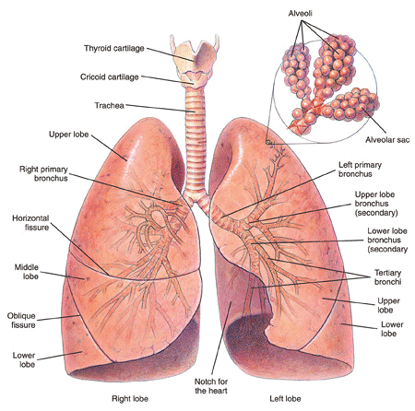
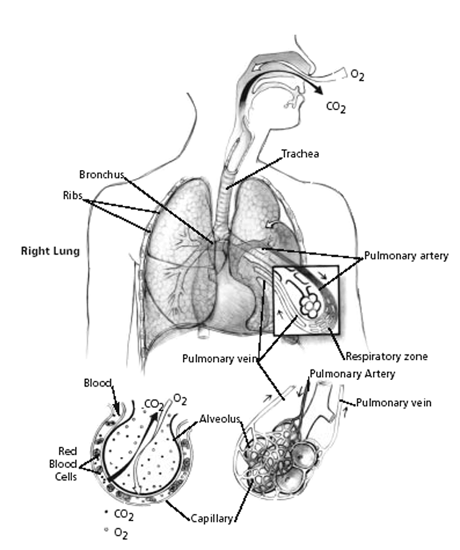
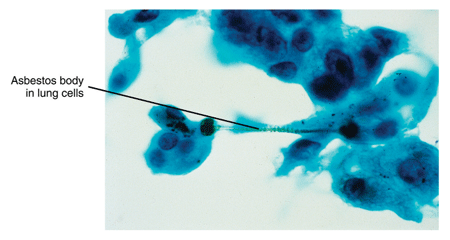
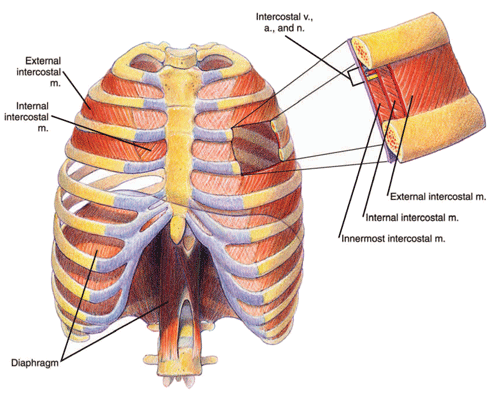
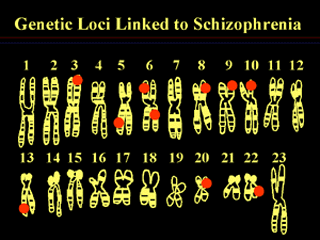
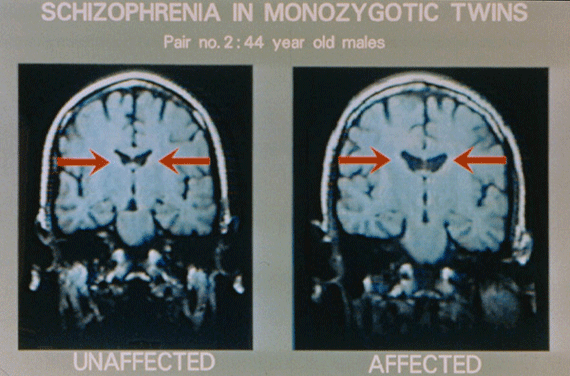
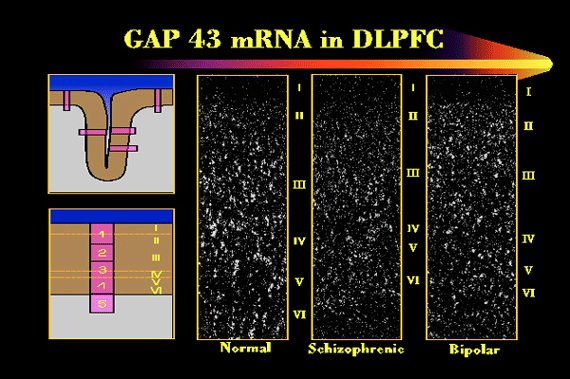
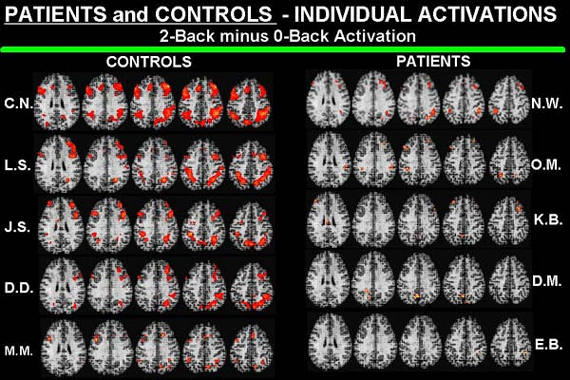

 How to Prepare an Educational and Employment History for a Social Security Disability Case
How to Prepare an Educational and Employment History for a Social Security Disability Case